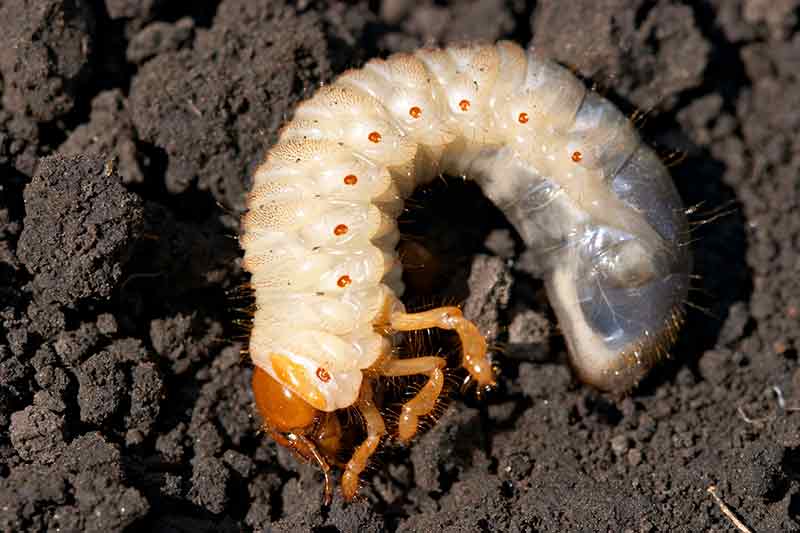Many homeowners take pride in their lush, green lawns, which provide a beautiful backdrop for family gatherings, outdoor activities, and relaxation. But maintaining and attaining that perfect appearance often comes with its challenges, especially when pests invade. From burrowing animals to hungry insects, pests can wreak havoc on even the healthiest lawns. Maintaining the beauty and health of your outdoor area depends on understanding the most common lawn pests and practical ways to control them. This article discusses six common lawn pests and offers solutions to combat their destructive tendencies.
1. Grubs: The Hidden Menace Beneath the Soil
Beetle larvae, or grubs, are one of the most common lawn pests. These white, C-shaped insects feed on the roots of grass, producing easily pulled-up brown, wilting areas. Their presence can often go unnoticed until major damage occurs. Identifying grubs involves looking for indicators of lawn deterioration and excavating areas of grass to examine the ground. To effectively manage grubs, you can either use insecticides designed for the task or introduce beneficial nematodes, which are tiny worms that feed on grubs. Timing is essential; targeting grubs in their younger, more susceptible phases guarantees the best efficacy. If you’re unsure about handling the situation yourself, a professional lawn care service can also help you monitor and manage grub populations effectively.
2. Chinch Bugs: The Tiny Troublemakers
Small black insects called chinch bugs seriously damage lawns, particularly in hot and dry circumstances. They pierce grass blades and extract essential nutrients, which causes yellowing spots that can quickly turn brown. Identifying chinch bugs requires searching for black specks in the grass or using the soap flush technique, in which case a small portion of grass is sprayed with dish soap mixed with water. This encourages bugs to come to the surface, making identification easier. Chinch insect infestations can be avoided with cultural measures like proper grass hydration and avoidance of over-fertilization. If infestations arise, insecticidal sprays might be required; however, timing and administration are crucial for guaranteeing efficacy.
3. Armyworms: The Lawn Raiders
Armyworms are caterpillars that can devastate lawns in a short period. Their voracious appetites cause quick defoliation, resulting in unattractive and destructive areas of bare soil. Usually emerging in late summer or early autumn, these pests are distinguished by their unique stripes and aggressive feeding behavior. Regular monitoring is required during these times. For minor infestations, hand-picking armyworms may be effective; however, for more severe situations, suitable pesticides may be needed. Keeping a healthy lawn via appropriate fertilizer and watering will help it recover more quickly from any damage caused by these pests.
4. White Grubs: The Lawn Destroyers
While grubs were previously discussed, white grubs deserve special attention because they can cause significant damage. The weakening of a lawn’s root system increases its vulnerability to drought and disease. These pests typically appear in late summer and fall, coinciding with lawn maintenance routines. Identifying white grubs requires looking for their distinctive form in the soil under the surface level. Aeration and over seeding are two preventative lawn care practices that strengthen the grassroots. Treatment options for severe infestations include pesticides, especially targeted at white grubs, although effective control depends on administering them at the right time in their life cycle.
5. Ticks: The Health Hazard
Ticks are not only a nuisance; they also pose serious health risks to both pets and humans. These tiny arachnids thrive in moist, shaded environments and can attach themselves to humans and animals, causing a variety of diseases. After spending time in the yard, one should regularly look for ticks. Making a tick-safe zone involves trimming grass and clearing any debris where ticks can hide. Using insecticides intended especially for tick control may also help lower their population. Safety during outdoor activities can be improved by educating family members on the need for tick inspections and offering suitable protective measures such as repellent sprays.
6. Ants: The Persistent Invaders
Depending on the species, ants can be both beneficial and problematic. While some ants aerate the ground and aid in decomposition, others—like fire ants—can seriously disturb and destroy lawns. Fire ants create mounds that are unsightly and harmful to the grass underneath. Identifying ant colonies calls for tracking their nests. Effective management requires utilizing pesticides meant for ant control and baits. To guarantee favorable results, one should choose products especially targeting the type of ant present. Preventative measures, such as keeping a healthy lawn and practicing proper sanitation, can also deter ants from establishing colonies.
Conclusion
Managing lawn pests is critical for keeping a healthy and vibrant lawn. Understanding common pests, including grubs, chinch bugs, armyworms, white grubs, ticks, and ants, can help one to create practical strategies to reduce their influence. Targeted treatments and cultural practices, together with regular monitoring, help protect the grass against these invaders. For those seeking assistance, engaging a professional lawn care service can provide pest management expertise while also preserving the landscape’s beauty and health. With diligence and proactive measures, you can have a lush and thriving lawn.

